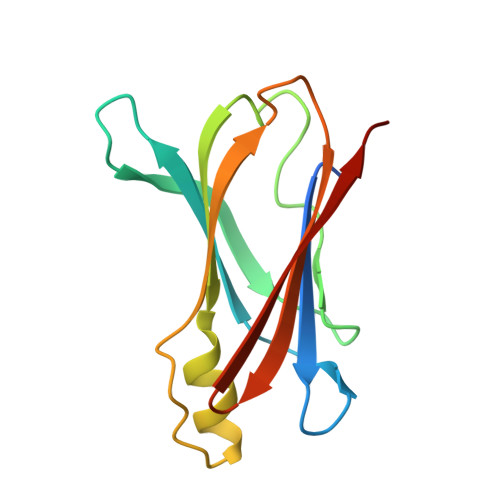Probing the Dissociation Pathway of a Kinetically Labile Transthyretin Mutant.
Sun, X., Ferguson, J.A., Leach, B.I., Stanfield, R.L., Dyson, H.J., Wright, P.E.(2024) J Am Chem Soc 146: 532-542
- PubMed: 38134439
- DOI: https://doi.org/10.1021/jacs.3c10083
- Primary Citation of Related Structures:
8T5X - PubMed Abstract:
Aggregation of transthyretin (TTR) is associated with devastating amyloid diseases. Amyloidosis begins with the dissociation of the native homotetramer (a dimer of dimers) to form a monomeric intermediate that assembles into pathogenic aggregates. This process is accelerated in vitro at low pH, but the process by which TTR dissociates and reassembles at neutral pH remains poorly characterized due to the low population of intermediates. Here, we use 19 F-nuclear magnetic resonance (NMR) and a highly sensitive trifluoromethyl probe to determine the relative populations of the species formed by the dissociation of a destabilized variant, A25T. The A25T mutation perturbs both the strong dimer and weak dimer-dimer interfaces. A tetramer ⇌ dimer ⇌ monomer (TDM) equilibrium model is proposed to account for concentration- and temperature-dependent population changes. Thermodynamic and kinetic parameters and activation energetics for dissociation of the native A25T tetramer, as well as a destabilized alternative tetramer (T*) with a mispacked F87 side chain, were extracted by van't Hoff and 19 F-NMR line shape analysis, saturation transfer, and transition state theory. Chemical shifts for the dimer and T* species are degenerate for 19 F and methyl probes close to the strong dimer interface, implicating interfacial perturbation as a common structural feature of these destabilized species. All-atom molecular dynamics simulations further suggest more frequent F87 ring flipping on the nanosecond time scale in the A25T dimer than in the native A25T tetramer. Our integrated approach offers quantitative insights into the energy landscape of the dissociation pathway of TTR at neutral pH.
- Department of Integrative Structural and Computational Biology and Skaggs Institute of Chemical Biology, The Scripps Research Institute, 10550 North Torrey Pines Road, La Jolla, California 92037, United States.
Organizational Affiliation:
















